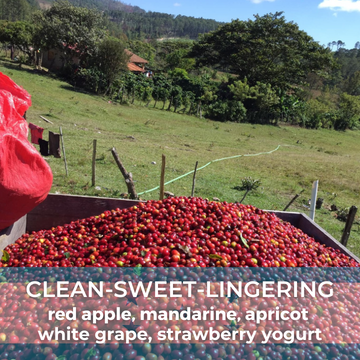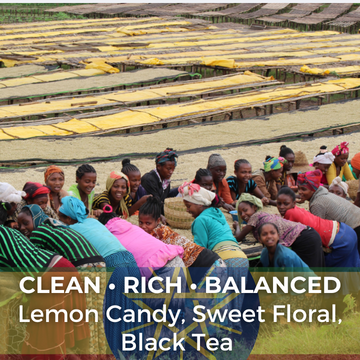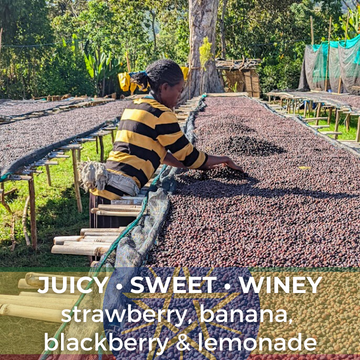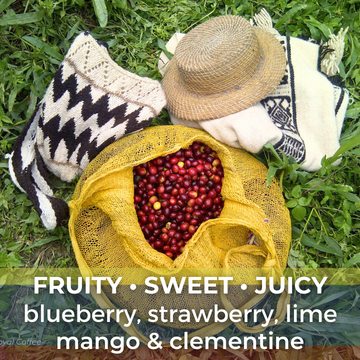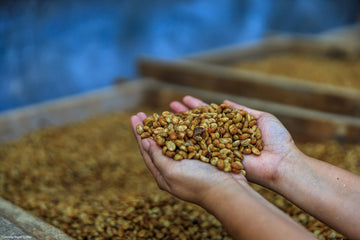CoffeeSock FAQ
Got CoffeeSock® filter questions? We've got answers!
(Well, CoffeeSock® has answers, we're just sharing them here for your convenience!)
CLEANING
I am concerned about coffee grounds down my drain, any suggestions for cleaning?
There are a few ways you can go about disposing of your grounds after use. We suggest composting them (or dumping them out) and rinsing in the sink. If you are concerned about grounds down your drain we offer a sink strainer here: https://coffeesock.com/shop-retail/stainless-steel-sink-strainer
You can also let the grounds dry in the sock and the dry grounds will dump out smoothly.
How often should I clean my CoffeeSock® filter?
Rinse as soon after use as is convenient and hang to dry. Oil buildup will increase with ground contact time. To remove oil build up we suggest boiling your filter every 6-8 weeks (or as is necessary) to remove any oil build up. Boil for 10 minutes in fresh water. Repeat if build up is heavy. Add a teaspoon of baking soda or distilled vinegar to the boil to freshen, as is necessary.
Can I wash my CoffeeSock® filter in the washing machine?
We don’t recommend it. Detergents and fabric softeners will flavor your brew.
Can I use dish soap to clean my CoffeeSock® filter?
We don’t recommend using soaps, because it will leave a soapy residue and end up affecting the flavor of your brew.
Does the CoffeeSock® filter shrink?
The weave of the filters will tighten in first boil. The filter will shrink slightly after the first few uses. Our filters are designed to fit specific applications for the full duration of their lifespan.
MATERIALS
Are the CoffeeSocks bleached?
No, the fabric is unbleached. CoffeeSocks are made of 100% organic cotton.
How many microns is your filter?
Since our coffee filter fabric is made from a natural and organic fiber there is a range of pore sizes when measured. I find that the cotton weave pores, while dry, measure 70-100 microns in size, while wet these pores reduce in size and function like a 50 micron filter. The ColdBrew Polisher filter removes fine sediment down to around 25 microns which is essentially all but the finest silt.
What are the brown specks that showed up on my CoffeeSock® filter?
Occasionally there is a batch of fabric that does this. It may even be a portion of a loom run. The specks are impurities in the cotton run. Think, stems, leaves, and bolls. It is simply cellulose like the rest of the fabric, and harmless. Your filter will perform the same either way.
What is the band of green discoloration on my CoffeeSock® filter?
Some banding of color may be seen in filters after brewing as the coffee grounds sit and the moisture evaporates. This is due to a process called chromatography https://en.wikipedia.org/wiki/Chromatography. We have experienced it rarely and is likely unique to the coffee used if this is experienced. It may be that the coffee is a light roast and not all pigments have been thoroughly roasted, or it may occur with flavored coffees where the additionally organic compounds are separated due to varying solubility and weight. This is not coming from the filter, but from the coffee.
Is your organic cotton fabric GOTS certified, what does GOTS mean?
Yes, GOTS is a textile production certification that offers providence from field to fabric. GOTS also certifies humane working conditions throughout the supply chain. GOTS organic cotton is a natural, GMO-free fibre that uses less water than standard cotton. Its production does not involve the use of chemicals and encourages rotation of crops to keep soil healthier, more fertile and maintain humidity.
Is your thread organic?
Yes. We use a GOTS certified organic cotton thread that is dyed with fiber-reactive dyes that are approved under the Global Organic Textile Standard (GOTS). These dyes are non-toxic.
Does your fabric contain sizing?
Yes. Sizing is used. It is a necessary part of production. The sizing used in the production of our fabrics is organically certified corn starch. The sizing is washed from the fabric upon finishing but some may remain. This remaining sizing will be removed with initial boil.
What is the difference between your nutmilk/tea fabric and your coffee filter fabric?
The fabric that we use for our ColdBrew filters is a tighter weave than our Tea/NutMilk fabric.
Is my filter compostable?
Yes! You can add to your compost bin. Cutting filter into 1 inch pieces will hasten decomposition.
USAGE
It looks like my CoffeeSock® has black specs/mold on it, how would my filter have mold on it?
Mold is not encountered if best use principles are followed but can occur if the wet filter is left enclosed in equipment for an extended period of time. To remedy, boil for 10 minutes in fresh water, change the water, wring the filter and boil again in fresh water. Add 1 tsp baking soda to the first boil and 1 tsp distilled white vinegar to the second boil. This will sanitize and freshen the filter. Some stains may remain.
My CoffeeSock® seems clogged, why is the flow so slow?
This may be a result of a change in grind sizing. We recommend medium coarse to coarse grounds. Alternately, this may be due to oil build up. Over time your filter will begin to develop an oil build up. This can result in a slower flow. To remove oil build up we suggest boiling your filter every 6-8 weeks (or as is necessary). Boil for 10 minutes in fresh water. Repeat if build up is heavy. Add a teaspoon of baking soda or distilled vinegar to the boil to freshen, as is necessary.
Does your CoffeeSock® filter out diterpenes (cafestol and kahweol)?
We cannot say with certainty that the cafestol is reduced with CoffeeSock filters. Our assumption is that the presence of Cafestol in the CoffeeSock® brew is somewhere in between the results from paper and metal filtered brews. No clinical tests have been performed.
How long will my CoffeeSock® filter last?
Your filter can last up to a year or more. We typically suggest replacing your filter after 9-12 months.
Does the CoffeeSock® remove oils?
CoffeeSock® filters will remove more of the coffee oils than you would find in a French Press brew, but less than paper. This is based on observation and taste tests. Lab testing has not been done.
Why is the water flowing through my filter so fast/so slow?
The cotton threads will shrink somewhat with first boil and use. As this occurs the pores (voids between threads) will tighten. Rate of flow will initially decrease and should be optimal (and consistent) after initial boil or after a few uses. Oils will also enter the threads and cause further resistance to flow. This can be managed with boiling. To remove oil build up we suggest boiling your filter every 6-8 weeks (or as is necessary) to remove any oil build up. Boil for 10 minutes in fresh water. Repeat if build up is heavy. Add a teaspoon of baking soda or distilled vinegar to the boil to freshen, as is necessary
Grind size is another variable to control flow. Fine grinds tend to block the pores and restrict flow. We recommend medium coarse to coarse grind for an optimal brew. This can be somewhat counterintuitive, but in this case a coarser grind will produce a richer brew.
Must I keep my filter in the refrigerator or freezer?
It is not necessary to keep CoffeeSock filters in the refrigerator between use. Some fabric filters suggest this and it may be suggested so, as to preserve the nap or filtering characteristics of these particular fabrics. CoffeeSock filters perform well wet or dry. It is not necessary to keep wet, nor to store in the refrigerator. Simply empty, rinse and hang to dry.
ENVIRONMENTAL
Why not paper?
2.25 billion cups of coffee are consumed globally every day. Assuming that at least 1/3 of those cups are currently made with paper filters in 8 cup batches, 750 million paper filters are being made and discarded, each and every day. 275 billion per year. It takes the equivalent of 1.5 million trees to make that many filters annually. In one year the volume of trash created by the filters only (not accounting for the grounds) is enough to fill 128 buildings the size of the Louvre to a height of 10 feet. Each Coffeesock® filter replaces 4- 12 boxes of paper filters per year, plus your coffee tastes better. Bleached or unbleached, most paper utilizes toxic, noxious chemicals and fossil fuels in pulp production stages. Requiring huge amounts of water to process, these chemicals can pollute water sources of drinking water.
Why organic cotton?
Cotton imparts no flavor on the finished brew unlike paper. Cotton is 90% cellulose, which is a tasteless and odorless compound that is insoluble in water. Wood is 40-50% cellulose, while hemp is approximately 45% cellulose. conventional cotton is grown using large amounts of pesticide and defoliants to prepare the crop for harvest. Organic cotton is grown without exposure to pesticides and defoliants = better for you and better for our planet. All CoffeeSock filters are made with non-gmo GOTS certified organic cotton.
Why not french press or reusable metal filters?
Cotton absorbs some of the oils released from coffee beans yet lets acids pass through. The resulting balanced brew is clear, crisp, rich and robust with all the acid of paper brewed coffee, without the paper taste, and all of the richness of french press without the heavy oiliness.
Does CoffeeSock® save me money as well as the planet?
CoffeeSock® filters are expected to last about a year before quality of brew begins to fade. CoffeeSock® filters are 10-50% the cost of disposable filters per year, and 20% the cost of quality reusable filters. Cotton is a more efficiently renewable resource than plastic, metal or paper.
Cost per year comparison
Coffeesock® filters $14
Cheapest paper filters $20
Premium paper filters $72
Metal filter $60
CoffeeSock® DIY coldbrew at an average cost of $0.50-0.75 per serving, saves over $900 per year on coffee shop cold brew coffee.
All information courtesy CoffeeSock®
